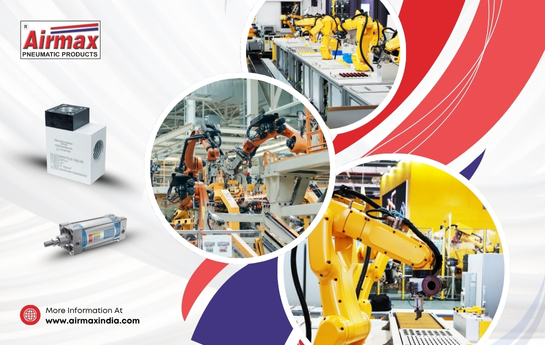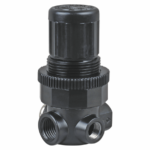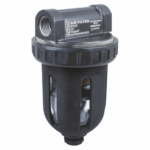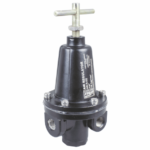Why Automation Plants Depend on Reliable Flow Control Solutions

Flow Control’s Function in Automation
Automation plants depend on precise air and liquid control to run smoothly. Effective flow control is necessary for every operation, such as operating an air cylinder, moving parts on a conveyor, and regulating pressure in a filling machine. Pneumatic valves, which control the air flow to power equipment safely and efficiently, are essential parts of this process.
When these valves function as intended, automation plants maintain high speed, consistent output, and consistent safety. On the other hand, inaccurate or malfunctioning valves can result in lost goods, equipment damage, or downtime. Reliable flow control is therefore not only essential but also vital. The functions, types, benefits, and applications of pneumatic valves will be covered in this blog, along with advice on selecting the best manufacturer for your automation plant.
What is a pneumatic valve?
In an automation system, a pneumatic valve regulates the direction and flow of compressed air. It tells your machines when to start, stop, or change direction and guides air where it needs to go. Think of it like a traffic light.
These valves aid in controlling the timing, pressure, and speed of moving components. They are employed in an automation plant to regulate robotic arms, air cylinders, and other devices that depend on air flow for precise and safe operation.
Also, explore our detailed guide on Different Types of Pneumatic Valves and Their Applications. to better understand how each type enhances system performance.
The fundamental parts of a pneumatic valve
Typically, a pneumatic valve consists of:
- Body: The primary structure that contains every component.
- Spool: Opens or closes airways by moving inside the valve.
- Actuator: Manages air flow by pushing or pulling the spool.
- Ports: Compressed air entry and exit points.
- Seals: Guarantee smooth operation and stop leaks.
The spool moves in response to the actuator, guiding air through the appropriate ports and regulating the movement of the air cylinder.
How a Pneumatic Valve Works
The procedure is straightforward: compressed air enters the valve, the spool moves, and air moves in the direction of the intended outlet. This pressure generates motion by moving a cylinder or actuator. Airflow either stops or changes direction when the valve returns to its initial position. Motion control in contemporary automation plants is based on this straightforward but effective method.
Pneumatic valve types utilized in automation plants
Directional Control Valves
The direction of air flow is determined by these valves. They can be 2-way, 3-way, or 4-way valves, each intended for a particular function. For example, a 3-way valve can move an air cylinder forward and backward, just like switching gears in a vehicle. Directional control valves are frequently found in lifting units, sorting systems, and packaging machines where accuracy and timing are crucial.
Flow Control Valves
Flow control valves adjust how fast air moves through the system. By controlling airflow, they manage the speed of cylinders and actuators. For example, in a conveyor line, they ensure bottles or boxes move steadily without sudden jerks. This smooth flow prevents damage and helps maintain accuracy during filling or labeling operations.
Pressure Relief and Check Valves
These valves protect the system. A pressure relief valve prevents excess pressure that could damage parts, while a check valve keeps air from flowing backward. Together, they maintain safe and stable performance throughout the automation process.
Advantages of Using Reliable Pneumatic Valves in Automation
Consistent Performance and Productivity
Automation plants can operate smoothly and continuously at a steady speed thanks to dependable pneumatic valves. For sectors like packaging and assembly, this consistency is essential because it reduces downtime and increases output.
Enhanced Safety for Operators and Equipment
Stable flow control prevents sudden air surges or stops that could harm machines or workers. By keeping air pressure balanced, pneumatic valves support both safety and reliability on the factory floor.
Energy Efficiency and Cost Savings
Well-designed valves optimize airflow, reducing unnecessary air consumption. Over time, this lowers energy costs and minimizes wear and tear, saving maintenance expenses and improving efficiency.
Real-World Applications in Automation Plants
Assembly Lines
Pneumatic valves control air cylinders that press, lift, or position components. Their accuracy ensures every motion is repeated with the same precision, improving assembly quality.
Packaging and Bottling Lines
From filling bottles to sealing packages, pneumatic valves regulate airflow for steady, accurate operations that reduce waste and improve output.
Material Handling Systems
Valves help direct airflow in sorting systems, conveyor belts, and palletizing units. This keeps products moving smoothly, preventing jams and maintaining steady throughput.
Specialized Industrial Machines
Machines like robotic arms, stamping presses, and pick-and-place systems rely on pneumatic valves to deliver exact timing and motion for high-speed automation.
If you’re unsure which valve suits your needs, check out our blog on How to Choose the Right Pneumatic Valve for Your Application.
How to Choose a Pneumatic Valve Manufacturer
Quality and Compliance
Choose a pneumatic valve manufacturer that uses durable, corrosion-resistant materials and meets industrial quality standards. High-quality construction ensures long service life and dependable operation under tough conditions.
Variety and Custom Solutions
The appropriate manufacturer provides a variety of valve types, including pressure, flow control, and directional valves, as well as the capacity to tailor solutions for particular automation configurations.
Support and Service
Reliable manufacturers provide technical support for selection, installation, and maintenance. Fast delivery and after-sales service help prevent costly downtime and keep systems running efficiently.
Maintenance Tips for Long-Term Reliability
Keeping pneumatic valves in good condition is simple but crucial:
- Check for air leaks or worn seals regularly.
- Clean parts to remove dust or debris.
- Lubricate moving sections when required.
- Replace damaged components immediately.
Consistent maintenance extends valve life, improves safety, and ensures uninterrupted performance across your automation plant.
Future Trends in Pneumatic Valves for Automation
The future of flow control is moving toward smarter, more efficient designs. Valves are becoming smaller, lighter, and more energy-conscious. New innovations focus on improving durability and integrating with automated systems that help monitor air usage and performance in real time.
Conclusion
In every automation plant, reliable flow control is the key to speed, safety, and smooth performance. Pneumatic valves make this possible by delivering precision, reducing downtime, and improving overall efficiency.
If you’re looking to optimize your automation systems, explore high-performance pneumatic valves from Airmax Pneumatics. Their quality-driven products ensure long-lasting flow control, dependable operation, and unmatched performance for your automation needs.
Ready to optimize your automation system? Contact us, and let’s find the perfect solution together.





